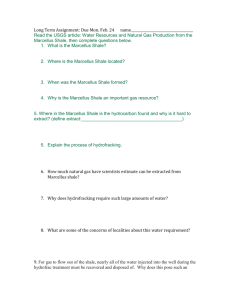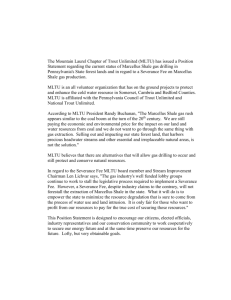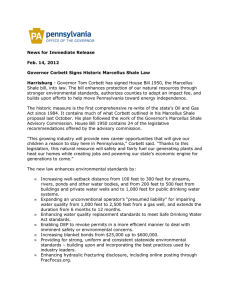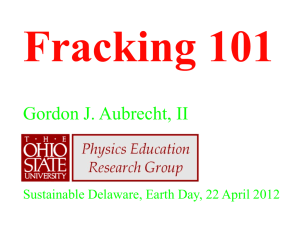Jean-Pierre Rodriguez Association of Energy Engineers Nov 15th
advertisement
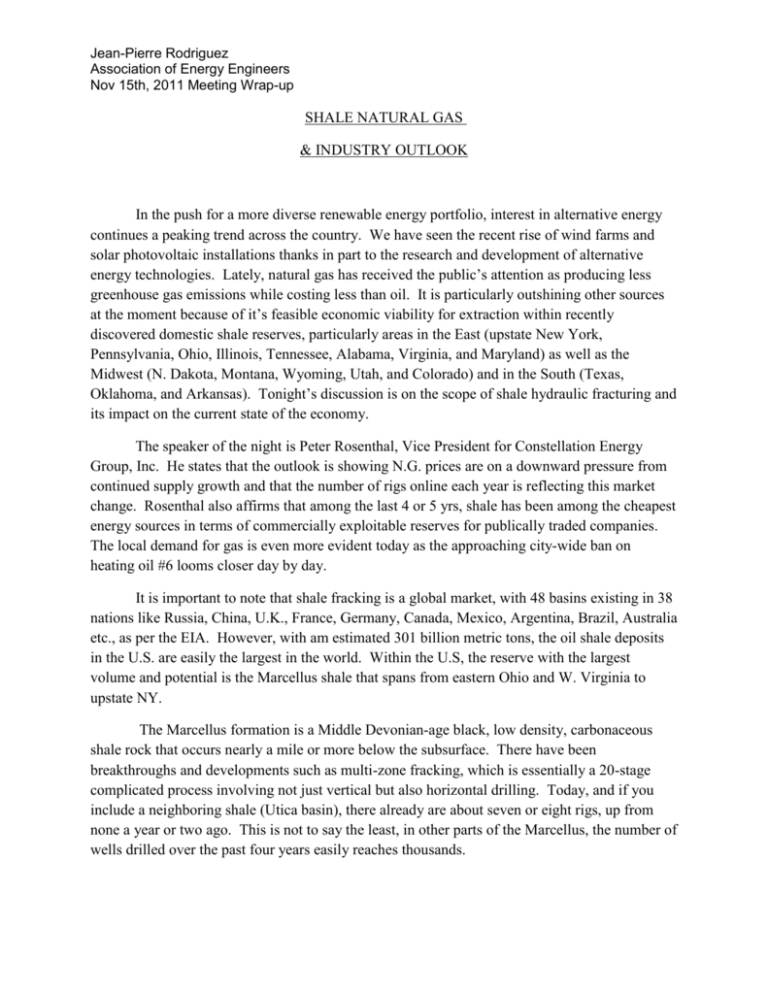
Jean-Pierre Rodriguez Association of Energy Engineers Nov 15th, 2011 Meeting Wrap-up SHALE NATURAL GAS & INDUSTRY OUTLOOK In the push for a more diverse renewable energy portfolio, interest in alternative energy continues a peaking trend across the country. We have seen the recent rise of wind farms and solar photovoltaic installations thanks in part to the research and development of alternative energy technologies. Lately, natural gas has received the public’s attention as producing less greenhouse gas emissions while costing less than oil. It is particularly outshining other sources at the moment because of it’s feasible economic viability for extraction within recently discovered domestic shale reserves, particularly areas in the East (upstate New York, Pennsylvania, Ohio, Illinois, Tennessee, Alabama, Virginia, and Maryland) as well as the Midwest (N. Dakota, Montana, Wyoming, Utah, and Colorado) and in the South (Texas, Oklahoma, and Arkansas). Tonight’s discussion is on the scope of shale hydraulic fracturing and its impact on the current state of the economy. The speaker of the night is Peter Rosenthal, Vice President for Constellation Energy Group, Inc. He states that the outlook is showing N.G. prices are on a downward pressure from continued supply growth and that the number of rigs online each year is reflecting this market change. Rosenthal also affirms that among the last 4 or 5 yrs, shale has been among the cheapest energy sources in terms of commercially exploitable reserves for publically traded companies. The local demand for gas is even more evident today as the approaching city-wide ban on heating oil #6 looms closer day by day. It is important to note that shale fracking is a global market, with 48 basins existing in 38 nations like Russia, China, U.K., France, Germany, Canada, Mexico, Argentina, Brazil, Australia etc., as per the EIA. However, with am estimated 301 billion metric tons, the oil shale deposits in the U.S. are easily the largest in the world. Within the U.S, the reserve with the largest volume and potential is the Marcellus shale that spans from eastern Ohio and W. Virginia to upstate NY. The Marcellus formation is a Middle Devonian-age black, low density, carbonaceous shale rock that occurs nearly a mile or more below the subsurface. There have been breakthroughs and developments such as multi-zone fracking, which is essentially a 20-stage complicated process involving not just vertical but also horizontal drilling. Today, and if you include a neighboring shale (Utica basin), there already are about seven or eight rigs, up from none a year or two ago. This is not to say the least, in other parts of the Marcellus, the number of wells drilled over the past four years easily reaches thousands. Jean-Pierre Rodriguez Association of Energy Engineers Nov 15th, 2011 Meeting Wrap-up Thanks to technology, the costs of extraction have gotten cheaper over the past three years. Some gas production estimates heard tonight range anywhere from 27 to 100 or more years worth of gas supply (as reported by U.S. Geological Survey) in the Marcellus alone. As it is, the northeast market is growing anywhere from 0.8% to 1.8% according other reports from 2010 margins. In our transition from dirtier to a cleaner source of fuel, the future looks positive when looking at domestic gas production; an aide to weaning us off foreign sources little by little.




